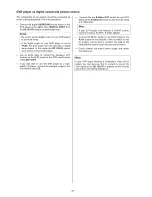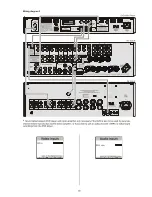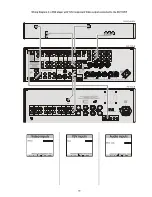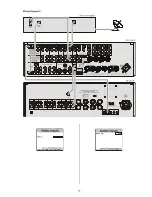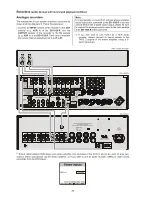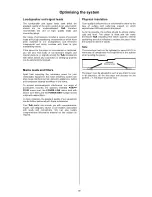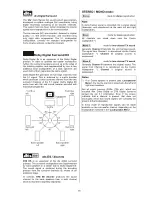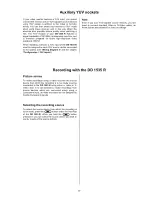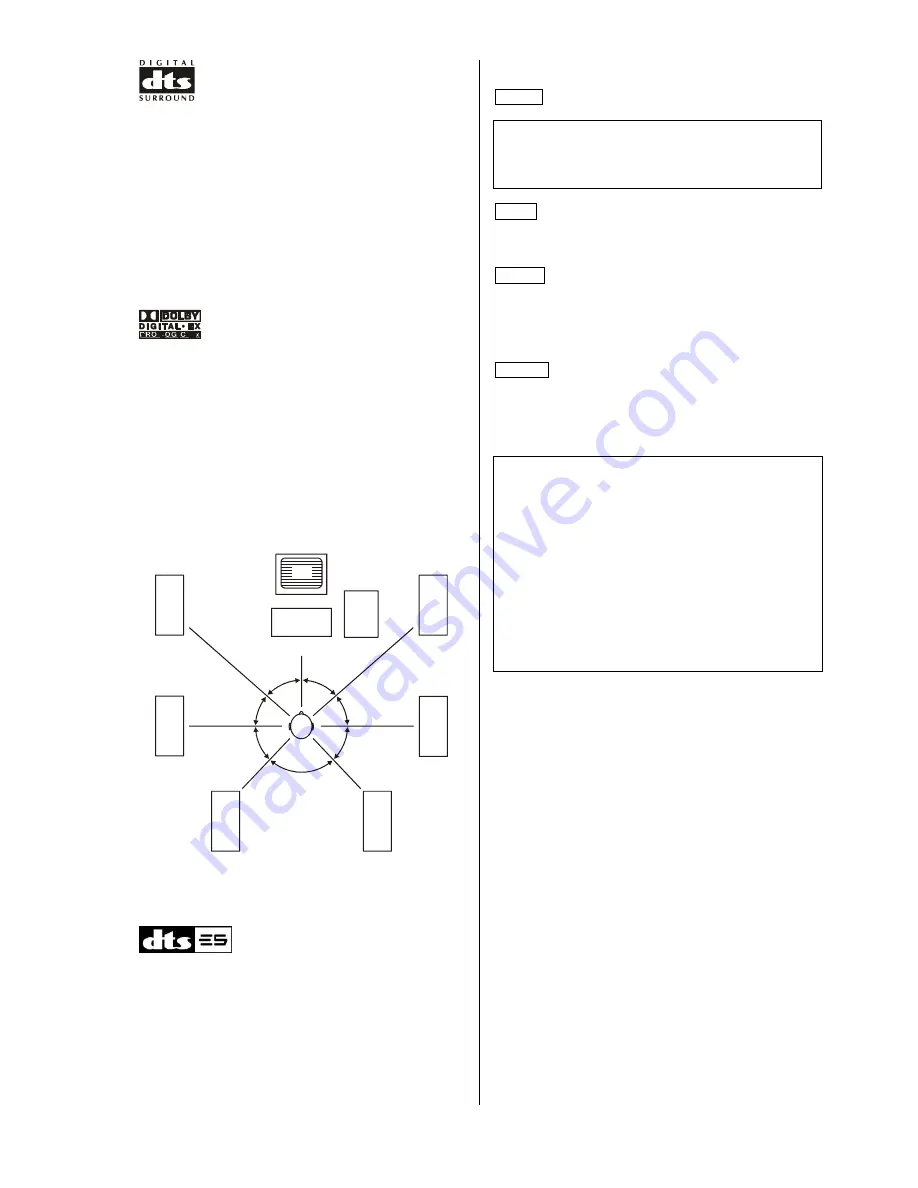
53
dts Digital Surround
The “
dts
” multi-channel film sound system was originally
developed to replace analogue film soundtracks, using
digital recordings consisting of six discrete channels.
This system has now been further developed to provide
spatial sound reproduction in the home situation.
The six channels (
5.1
) are encoded / decoded in original
quality, i. e. with 20-bit resolution, and recorded using
only slight data compression. The 5.1 loudspeaker
configuration, currently the standard arrangement for
home cinema systems, is ideal for playback.
Dolby Digital Surround EX
Dolby Digital Ex is an expansion of the Dolby Digital
process. In order to optimise the spatial reproduction
further, the surround speakers are set up to the sides of
the listening position, and supplemented by one or two
additional back loudspeakers (if 2 back speakers are
used, both of them reproduce the same signal).
Dolby Digital EX generates six full-range channels from
the 5.1 signal. This is achieved by a matrix decoder
which produces a third surround channel from the two
surround channels of the 5.1 signal. Dolby Digital EX
works best with film and sound material encoded with
extra Dolby Digital EX.
30°
30°
60°
45°
90°
45°
60°
TV
Surround
left
Back speaker
left
Surround
right
Back speaker
right
Centre
Front Box
left
Front Box
right
Sub-woofer
dts ES / discrete
DTS ES
is an expansion of the dts digital surround
process. The surround loudspeakers are supplemented
by back speakers in a similar way to Dolby Digital EX.
The sound signal is produced during the decoding
process from the surround channels by means of an
additional stage.
In contrast,
DTS ES discrete
produces the sound
channel for the back speakers from a sixth channel
which is recorded completely separately.
STEREO / MONO mode:
Stereo
mode for
stereo
reproduction
Note:
A multi-channel signal is converted into a stereo signal
(downmix), and reproduced via the main left and right
loudspeakers.
Mono
mode for
mono
reproduction
All channels are mixed down onto the Centre
loudspeaker *).
Mono I
mode for
two-channel TV sound
Generally
Channel I
transmits the synchronised sound.
The signal from Channel I is reproduced via the Centre
loudspeaker *);
Channel II
(original sound) is
suppressed.
Mono II
mode for
two-channel TV sound
Generally
Channel II
transmits the original sound. The
signal from Channel II is reproduced via the Centre
loudspeaker *);
Channel
I
(original sound)
is
suppressed.
Notes:
*) If no Centre speaker is present (see ‘
Loudspeaker
Menu’
), the Centre channel is mixed onto the left and
right main speakers.
Not all signal sources (DVDs, CDs etc.) which are
encoded with Dolby Digital or DTS Digital Surround
contain the full 5.1 information. Even if the screen
indicates that a channel is present, that does not
necessarily mean that sound signals will constantly be
present at that loudspeaker.
In every mode of reproduction signals can be made
available on the sub-woofer channel, depending on the
loudspeakers selected in the
'
Loudspeaker Menu
'
.
Summary of Contents for DD 1535 R
Page 1: ...V 1 3 Order No 9103 0321 OPERATING INSTRUCTIONS DD 1535 R...
Page 14: ...14...
Page 40: ...40...
Page 44: ...44...
Page 45: ...45 Wiring Diagram 4 a DVD player with YUV Component Video output connected to the DD 1535 R...
Page 47: ...47 Wiring Diagram 5...
Page 62: ...62...
Page 64: ...elektroakustik GmbH Co KG Herford Deutschland Germany...




